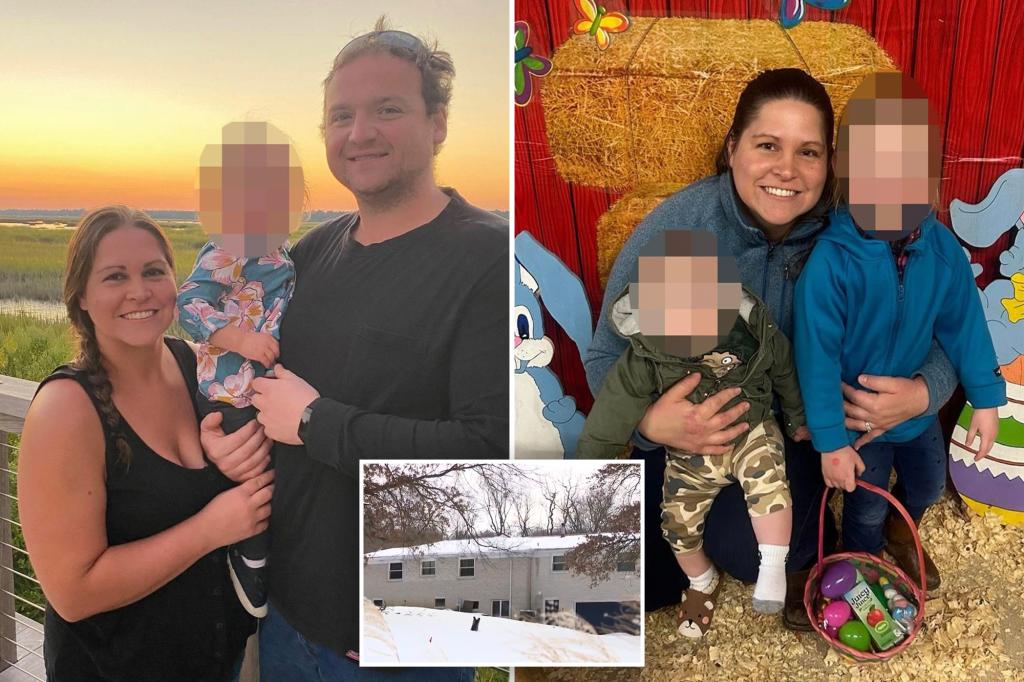The tranquil neighborhood of Ruffsdale, Pennsylvania was shattered by an unimaginable tragedy when a seemingly idyllic family of four was found dead in their home, victims of an apparent murder-suicide. Paul Swarner, 35, is suspected of fatally shooting his wife, Karen, 32, their five-year-old daughter, Evelyn, and their one-year-old son, Connor, before taking his own life. The grim discovery was made by Karen’s father on a Thursday evening after family members were unable to reach the Swarners. This horrific event has left the community reeling, struggling to comprehend the darkness that descended upon a family perceived as the epitome of the American dream.
The Pennsylvania State Police, in a press conference following the incident, shared the devastating details. All four family members were found in the same room, along with a Ruger .22 handgun, believed to be the weapon used in the killings. State Trooper Steve Limani, visibly shaken, described the scene as “unthinkable” and “unfathomable.” He expressed the hope that investigators would uncover some answers to explain this inexplicable act, acknowledging the immense difficulty in grappling with such a profound loss. The tragedy has left a void in the community, a stark reminder of the hidden struggles that can exist even within seemingly perfect lives.
The investigation revealed no prior history of domestic violence or criminal activity involving the Swarners. Conversations with family members who had spoken with the couple just days before the incident indicated no signs of conflict, fear, or concern. These conversations, described by Trooper Limani as “normal,” paint a picture of a family seemingly functioning without any outward indication of the impending tragedy. This absence of warning signs makes the event even more perplexing, raising questions about the internal pressures that might have led to such a devastating outcome. The facade of normalcy that cloaked this family’s hidden struggles underscores the importance of mental health awareness and the need for open communication.
The Swarners were described as a successful, loving family, their home filled with children’s toys, a testament to the life they had built together. Paul and Karen both held successful jobs, and their home was characterized as “the all-American home,” a stark contrast to the darkness that ultimately consumed it. This juxtaposition of a seemingly perfect life with the horrific reality of the murder-suicide highlights the insidious nature of hidden struggles and the devastating consequences that can arise when these struggles remain unaddressed. The tragedy serves as a somber reminder that appearances can be deceiving and that even those who appear to have it all may be battling internal demons.
Neighbors, like Dick Shawley, expressed shock and disbelief, struggling to reconcile the happy, playful children he knew with the tragic reality of their deaths. Shawley, who had given the children Christmas gifts, recalled their vibrant energy and joy, memories now tinged with profound sadness. His heartbreak echoes the sentiment of the entire community, grappling with the loss of innocent lives and the shattering of a family’s future. The devastation extends beyond the immediate family, impacting neighbors, friends, and a community left searching for answers in the wake of this incomprehensible tragedy.
The investigation is ongoing, with authorities working diligently to establish a timeline of events and provide some semblance of closure to the grieving family. The Westmoreland County Coroner’s Office is collaborating with investigators to piece together the final moments of the Swarner family, hoping to shed light on the motivations behind this horrific act. While the search for answers continues, the community mourns the loss of a family that once symbolized the American dream, now a tragic reminder of the fragility of life and the importance of seeking help for those struggling in silence. The tragedy serves as a poignant call for increased awareness and support for mental health issues, urging individuals to reach out for help when needed and to offer a compassionate ear to those who may be suffering in silence.










